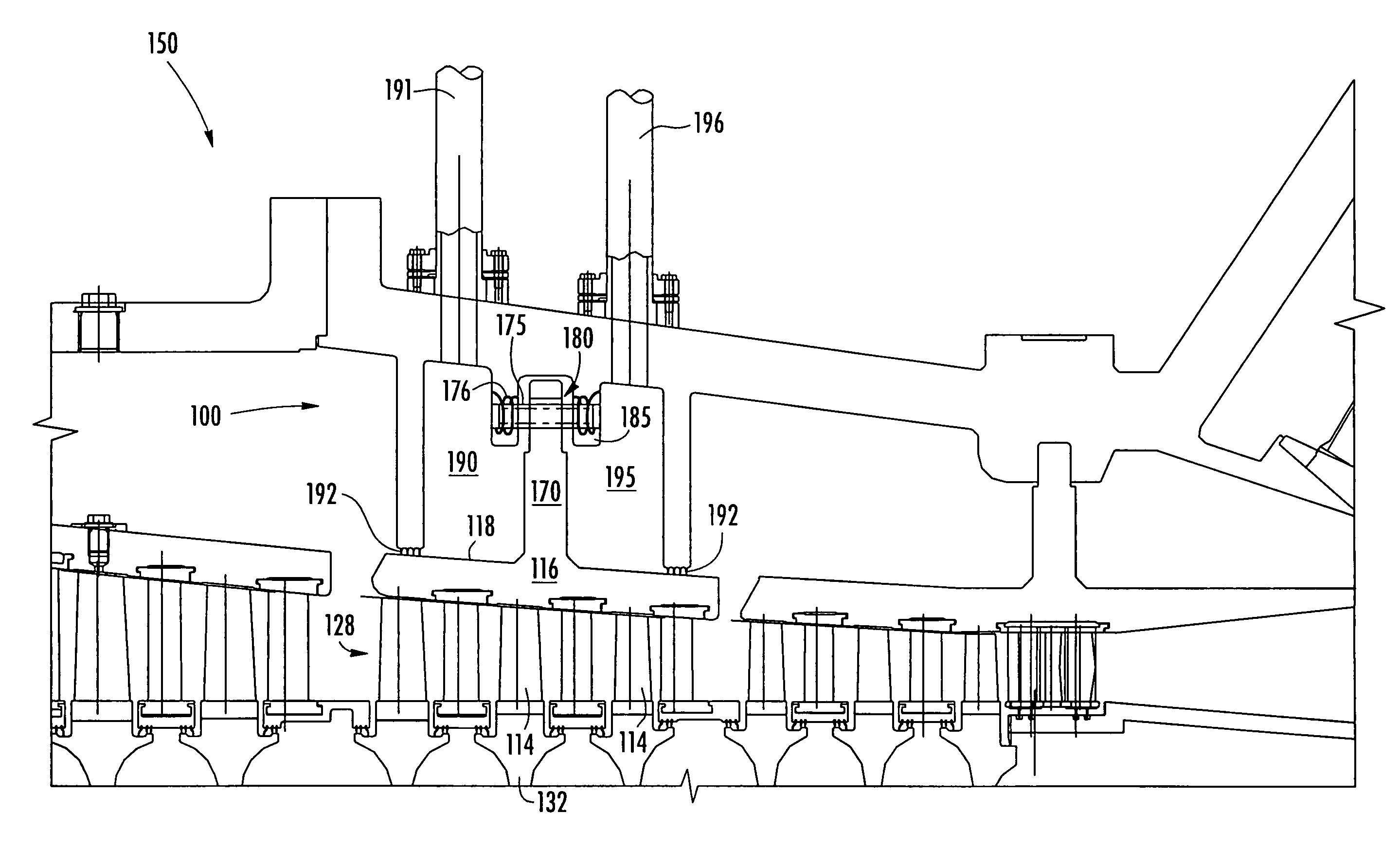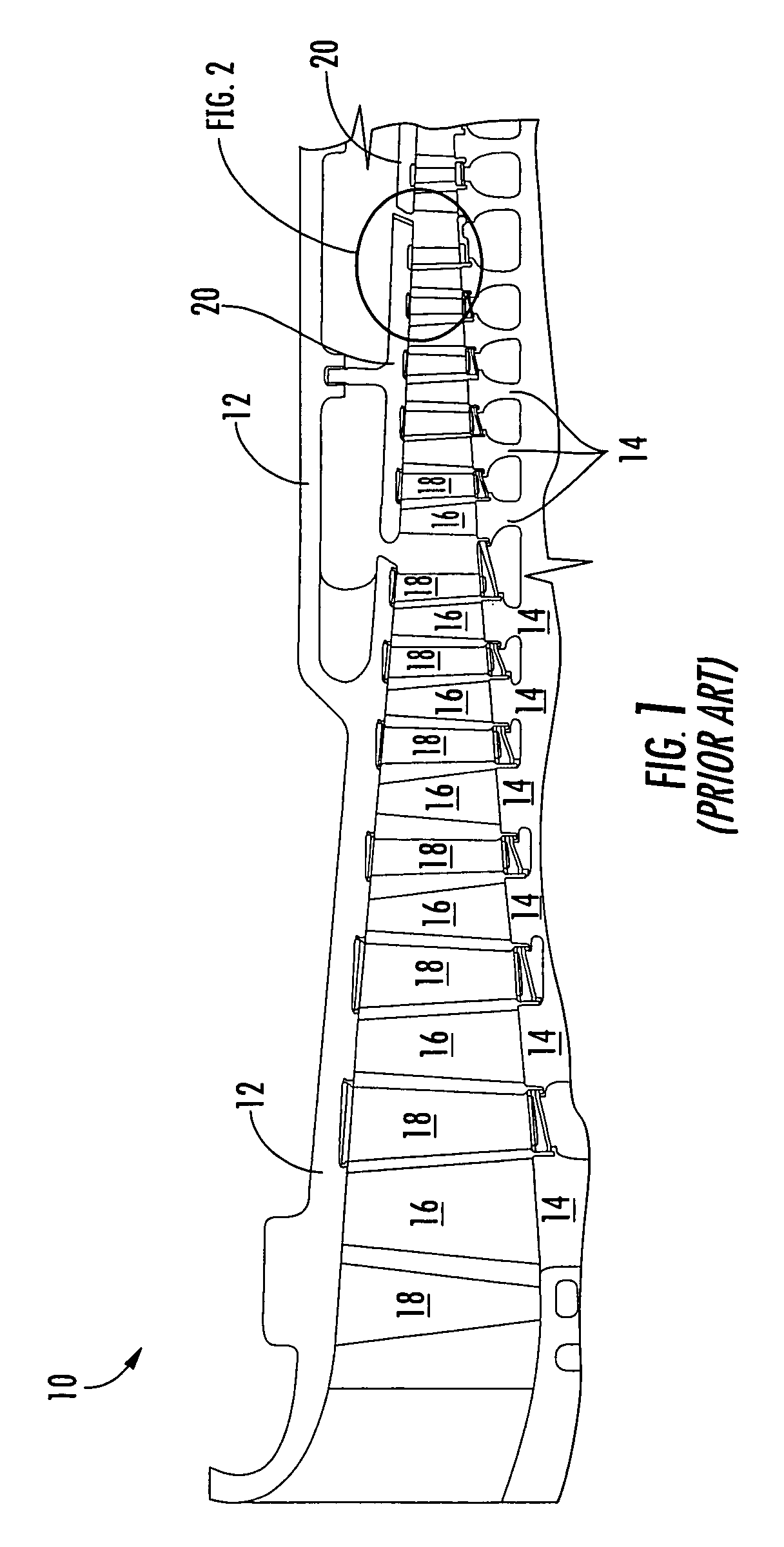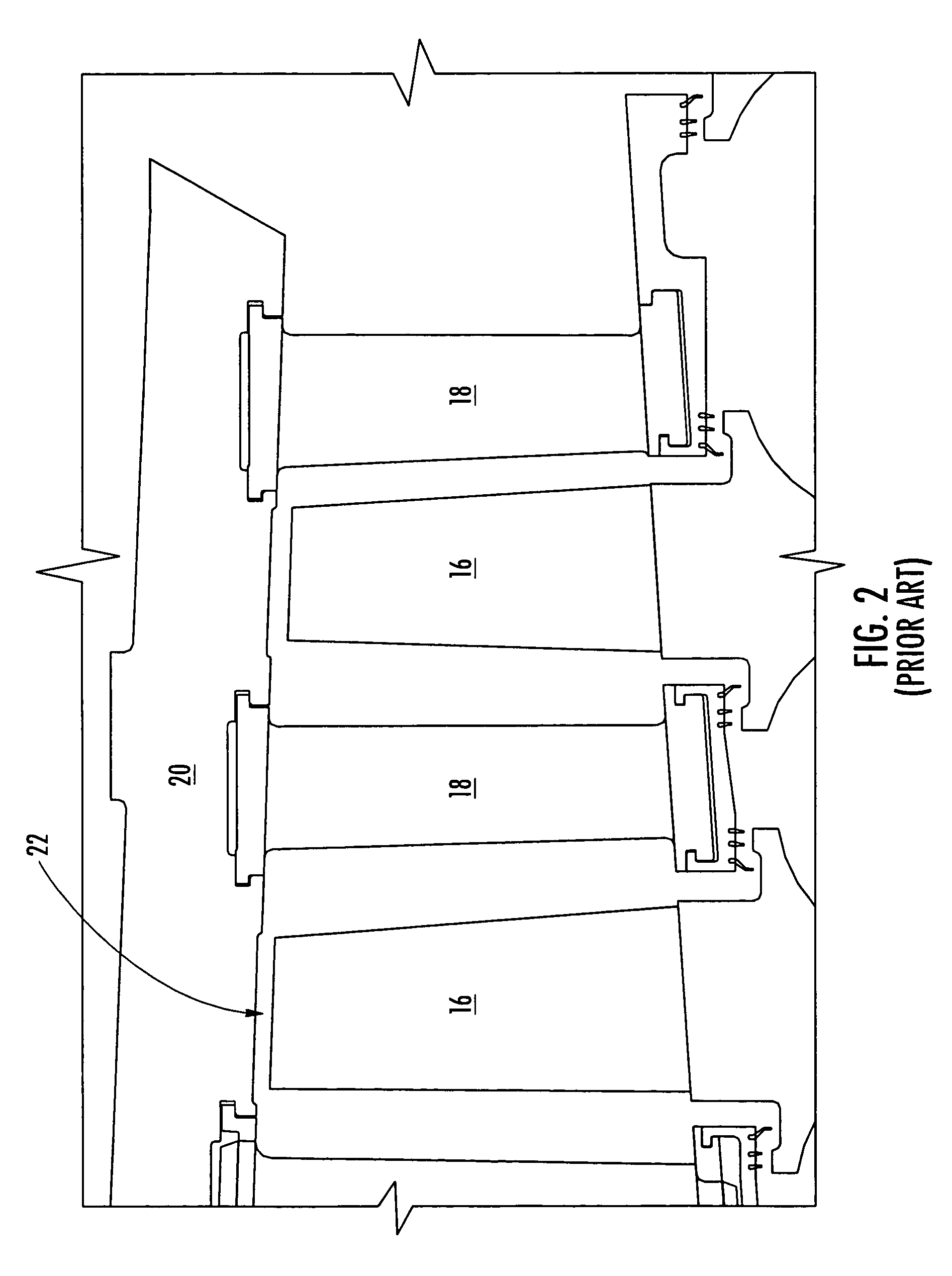Blade clearance system for a turbine engine
a turbine engine and blade clearance technology, which is applied in the direction of machines/engines, liquid fuel engines, lighting and heating apparatus, etc., can solve the problems of blade damage, affecting performance and efficiency, and the operational efficiency of the turbine engine is less than the theoretical maximum, so as to reduce the gap, increase the efficiency of the turbine engine, and reduce the amount of combustion gas
- Summary
- Abstract
- Description
- Claims
- Application Information
AI Technical Summary
Benefits of technology
Problems solved by technology
Method used
Image
Examples
Embodiment Construction
[0026]Embodiments of the present invention address the shortcomings of prior blade tip clearance or gap control systems by providing a blade ring adapted for movement relative to the blade tips. Exemplary embodiments will be explained in connection with various possible clearance control systems and methods, but the detailed description is intended only as exemplary. Exemplary embodiments will be shown in FIGS. 3-8, but the present disclosure is not limited to the illustrated structure or application.
[0027]Referring to FIGS. 3-6, a first exemplary embodiment of a blade gap control system 100 may reduce a gap 112 formed between blades 114 and blade ring 116 in the turbine engine. Reducing the gap 112 increases the efficiency of the turbine engine by reducing the amount of air flowing around the blades 114 rather than being compressed by the blades 114. The blade gap control system 100 may be configured to enable the turbine engine 150 to go through start up conditions, through a pinc...
PUM
 Login to View More
Login to View More Abstract
Description
Claims
Application Information
 Login to View More
Login to View More - R&D
- Intellectual Property
- Life Sciences
- Materials
- Tech Scout
- Unparalleled Data Quality
- Higher Quality Content
- 60% Fewer Hallucinations
Browse by: Latest US Patents, China's latest patents, Technical Efficacy Thesaurus, Application Domain, Technology Topic, Popular Technical Reports.
© 2025 PatSnap. All rights reserved.Legal|Privacy policy|Modern Slavery Act Transparency Statement|Sitemap|About US| Contact US: help@patsnap.com



